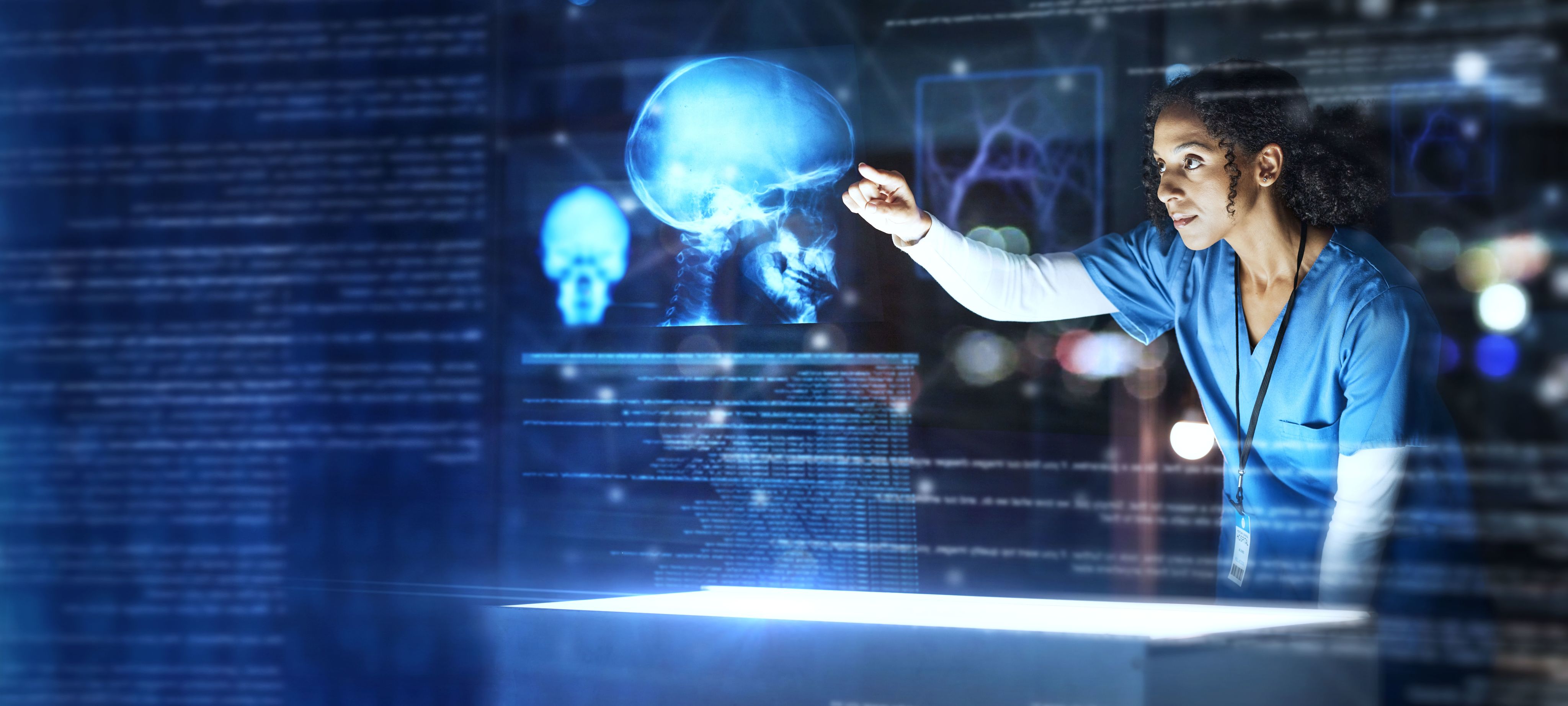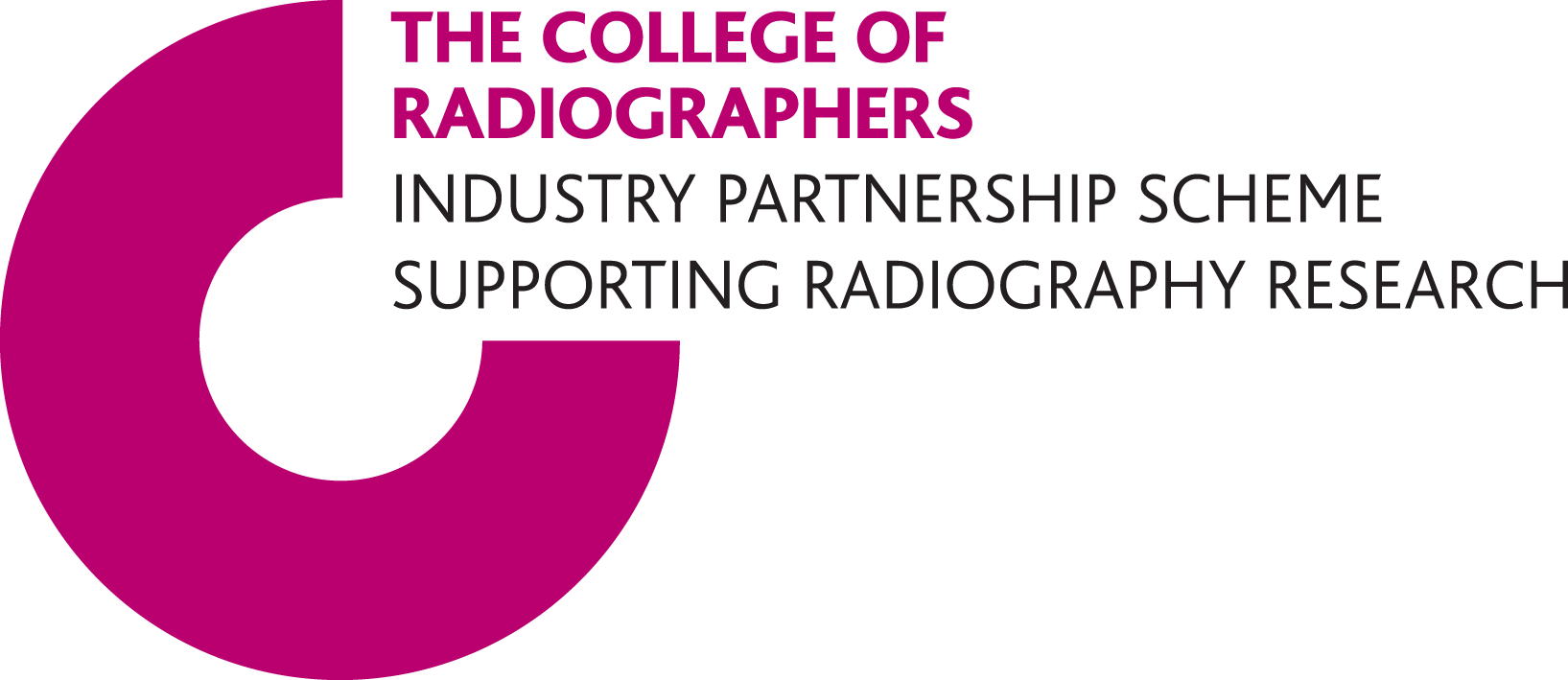AI and the future: how will radiographers be impacted?
In February, Gemma Walsh was awarded a prize at the inaugural Global AI Conference for an abstract detailing work into the effect AI could have on radiographers’ professional lives. She tells Synergy about the groundbreaking research
By Marese O’Hagan

The ramifications of embedding AI into healthcare practices is one of the most contentious topics facing radiographers today. On one hand, AI’s capabilities – and its potential for error – are still uncharted. On the other hand, radiography is the ideal environment for AI adoption – a conclusion that has already been reached by major figures at some of the UK’s top research institutions.
One of these institutions is City St George’s, University of London, where MRI specialist Diagnostic Radiographer Gemma Walsh is studying for her PhD in radiography. Gemma was also a research assistant on a remarkable AI project being carried out by the university, which she signed on to before starting her PhD in October 2024.
With Dr Christina Malamateniou as the principal investigator, the project looked at how radiographers reacted to the potential impact of AI on their jobs. “This was a large collaborative study with radiographers and researchers from across Europe,” Gemma explains. “The project explored the thoughts and opinions of radiographers about the perceived impact AI may have on their job roles, responsibilities and professional identity.
“This was one of the largest studies of its kind, with more than 2,200 respondents from 37 countries.”
A grant from the College of Radiographers Industry Partnership Scheme (CoRIPS) funded the project and allowed Gemma to sign on. Professor Mark McEntee from University College Cork and Professor Yiannis Kyratsis from the Erasmus University Rotterdam were co-investigators on the study, titled ‘R-AI-diographers: a European survey on perceived impact of AI on professional identity, careers, and radiographers’ roles’. Gemma and Nikolaos Stogiannios, a research fellow at City St Georges’s, were joint first authors on the study. The team collaborated with 18 co-authors across Europe.
The team used a mixed-method approach with an online survey, which contained 36 questions. The survey was distributed through the European Federation of Radiographer Societies and social media.
There will be two follow-up papers published later this year – one detailing the study’s qualitative results across Europe and another showcasing the UK quantitative and qualitative results.
Being honoured at the Global AI Conference
Gemma designed an abstract based on the study and was subsequently honoured at the inaugural Global AI Conference, a first of its kind event held on 3-4 February.
Taking place in London’s Queen Elizabeth II Centre, the conference was the product of a collaboration between the NHS and the Royal College of Radiologists. More than 1,000 guests from 54 countries attended discussions and presentations on the impact of AI on healthcare, with a focus on radiography.
Gemma’s poster abstract won the best general interest abstract prize – one of the top seven that were submitted. So how did it feel to be honoured in front of such an esteemed group? “It was a lovely surprise,” says Gemma. “I was shocked! It was a very welcoming and informative conference, and I am grateful to have been given the opportunity to present the results of our European study there.
“One of the outcomes of the study was that radiographers felt they would need to work more closely with other medical imaging professionals as AI is implemented, and having had this project recognised by the Royal College of Radiologists, with a prize, gives a sense of reassurance that as radiography professionals working in medical imaging we are all navigating this new technology together.”
This isn’t the first time Gemma has been honoured for her work. In 2024 alone, she won the Best Radiographer Research Abstract at the European Congress of Radiology and the Rising Star Award in the digital category from WeAreTheCity.

What did the study reveal?
As part of the study by City St George’s, the research team investigated short-term and medium to long-term impacts of AI on three central domains of radiographer responsibilities: patient care skills, technical skills and ‘other’ responsibilities.
“We found radiographers are overall optimistic about the future of the profession; however, [they] feel our roles will evolve with AI and may look very different from what they are today,” Gemma explains. “They also need AI-specific education and training to have trust in AI, allowing for safe and efficient implementation.”
The aim of the research was to identify how to better support the radiography workforce as AI is further embedded into day-to-day professional life, while also pinpointing barriers to AI execution. The study’s findings were published in the February 2025 edition of the Insights into Imaging peer-reviewed journal.
‘We found radiographers are overall optimistic about the future of the profession’

Ensuring AI benefits radiographers and patients
Gemma’s background as an MRI specialist Diagnostic Radiographer means she has a true picture of where AI could make the most positive impact. One of these areas is administration, where Gemma says AI could ease workflow issues. “I am hopeful that AI will better support radiographer workflows, giving radiographers more time for patient care and for performing technical skills and treatment,” she explains. “Admin [that] AI can take on would certainly make for a better working day.”
There’s also the more outward-facing facet of improved patient care – a central part of establishing AI in healthcare. “With regards to medical imaging as a whole, I think AI has the potential to create a better, more effective service for patients: shorter waiting times and quicker diagnosis and treatment times,” she continues.
“It is the patients that must remain the main focus of AI implementation and how it can benefit them.”
Although AI has been around for some time, research to explore its capabilities in the healthcare sector is fairly recent. That’s why it’s important for projects like City St George’s – and abstracts like Gemma’s – to be lauded for the outcomes they deliver.
But in the end, it’s leadership that will make or break administering AI into radiography, Gemma believes. “Services have the potential to become more efficient and safer providing AI is implemented in a safe and efficient manner,” she concludes. “However, this will only occur with the right teams and leadership in place.
“Radiography staff require AI education that is contextualised to their field to build trust in the AI tools they use but also to be able to innovate. Without this trust, AI adoption is going to be far more difficult.”
With a wealth of research still to do, making AI a day-to-day part of radiography practice will take some time. But with AI-radiography studies like that at City St George’s underway, it won’t be long until we understand the implications – both positive and negative – of embedding AI into radiography.
More about AI and radiography
The SoR has a number of resources for anyone interested in exploring the potential impact of AI on the radiography profession. The Radiographer AI Special Interest Group (SIG) welcomes all radiographers as well as assistant practitioners. The group shares personal experiences, guidelines, educational opportunities and literature to support one another. For more information, read about the SIG here.
The SoR also has an Artificial Intelligence Advisory Group. To read its workplan for 2023-25, and find out more about joining the group, click here.
Image and video credit: Getty Images
Read more





